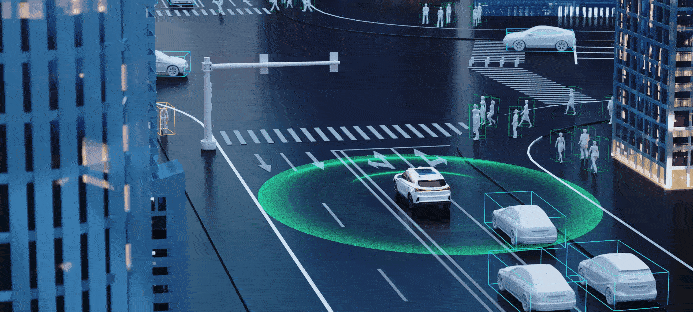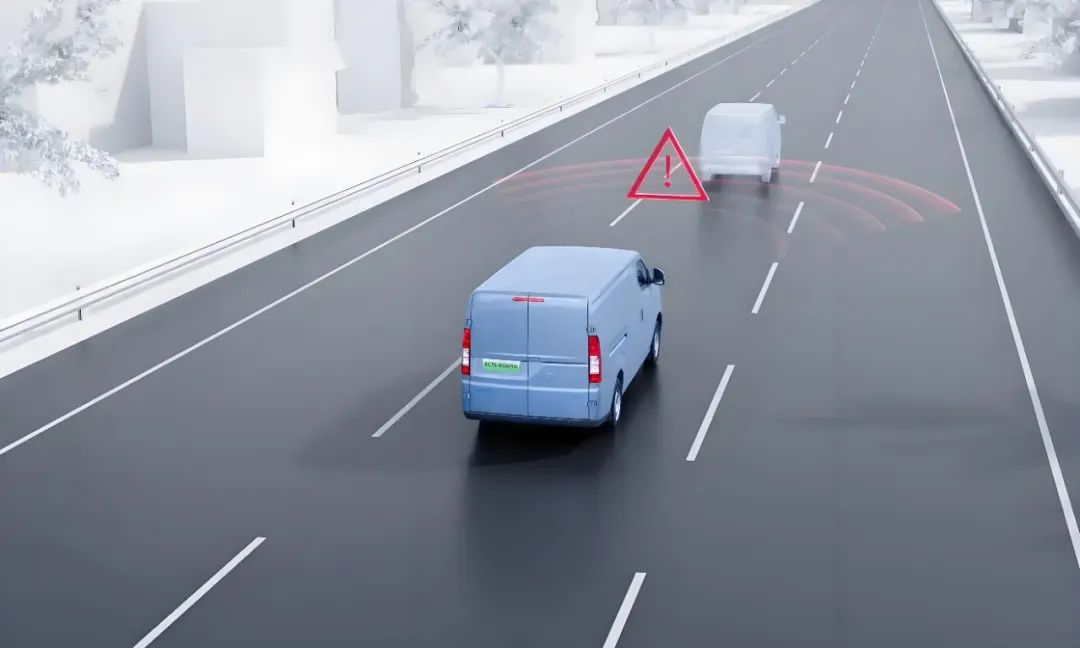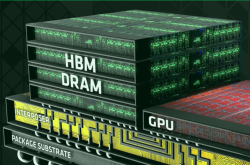Exploring the Black Box of End-to-End Large Models in Autonomous Driving
![]() 07/04 2025
07/04 2025
![]() 685
685
With the proliferation of autonomous driving technology, end-to-end (E2E) large models have emerged as a prominent direction for industry research and application. Unlike the modular structure of traditional autonomous driving systems, E2E models seek to directly map perceptual inputs (such as camera and LiDAR data) to control outputs (like steering wheel angle, acceleration, braking, etc.), leveraging deep neural networks as the core to bridge the gap from vision to driving behavior. This represents a shift from "rule-driven" to "data-driven" in autonomous driving, showcasing immense potential. However, this structure inherently brings about a widely debated issue: black box characteristics. In simpler terms, we neither comprehend why the model makes certain decisions nor can we accurately dissect its reasoning process.

To delve into the black box issue, it's essential to understand the structure of E2E models for autonomous driving. Traditional systems are typically modular, with clear divisions of labor: perception (recognizing obstacles, lane lines, traffic signals, etc.), localization (fusing GNSS and IMU), prediction (judging the motion trends of surrounding targets), decision-making (selecting the optimal path), and control (executing specific acceleration, deceleration, and steering commands). These modules communicate through interfaces, are independent and transparent, facilitating debugging, verification, and interpretation. Conversely, E2E models disrupt this structure by encapsulating all links into a unified large deep neural network. Taking "vision to control" as an example, the model captures camera images and directly outputs acceleration or steering commands, with perception, judgment, and decision-making logic implicit in the neural network's intermediate layer parameters. This means that even if we observe the model issuing a left turn command, pinpointing whether it's due to recognizing a left turn at an intersection, misinterpreting a traffic sign, or being disturbed by environmental noise is challenging.
The root of the black box phenomenon lies in the nature of deep neural networks. A typical E2E model may comprise tens or even hundreds of convolutional layers, attention mechanisms, nonlinear activation functions, and other components, with billions of parameters. These parameters are trained on large-scale datasets without explicit human-assigned meaning. The training objective often focuses on prediction accuracy, such as minimizing trajectory error or collision rates, rather than "making the model explainable." During this process, the model autonomously learns complex nonlinear mappings from raw inputs to final behaviors but doesn't construct visible logical chains like humans. Although this deep learning approach is effective, it results in a "trust but don't ask why" scenario, a quintessential manifestation of a black box.

In autonomous driving scenarios, this black box characteristic poses numerous challenges. The primary concern is safety. Autonomous driving systems must handle numerous complex scenarios in reality, including night driving, heavy rain, congested roads, and sudden crossings. If a model makes an erroneous judgment under these extreme conditions and we can't trace the cause, it's impossible to rectify it in similar scenarios in the future. For instance, in a test, an E2E system once mistakenly identified a roadside billboard as a stop sign and abruptly applied the brakes. This "phantom braking" behavior, if not precisely explained and avoided, can severely impact user trust and system stability.
The second issue is verifiability and compliance. Autonomous driving technology will inevitably face rigorous scrutiny from regulatory bodies, with transparency being a key criterion for system compliance. Suppose an autonomous vehicle causes casualties in an accident; courts and the public will undoubtedly inquire, "Why did the system make that decision at the time? Is there evidence it fulfilled its judgment obligations?" However, if the system is trained using E2E neural networks and outputs an "intuitive" result rather than a clear sequence of reasoning steps, a convincing explanation cannot be provided. The law cannot condone "AI making judgments based on feelings," which also limits the feasibility of E2E models for real-world road applications.
Apart from external regulation, another critical issue is system maintainability. In traditional modular autonomous driving systems, if abnormal behavior occurs, developers can troubleshoot the modules individually to ascertain whether perception misdetected an object, prediction deviated, or the controller responded with a delay. In E2E models, this layer-by-layer problem localization method is almost ineffective due to the intertwined and hidden functionalities of all modules within weight matrices and activation maps. Identifying the root cause of a problem often necessitates retraining, parameter tuning, or even modifying the network structure, a high-cost and high-uncertainty engineering task.
So, is there a way to "open" this black box? From a technical perspective, several feasible paths exist. One important direction is "Explainable AI" (XAI). XAI endeavors to reveal the internal computational logic of neural networks through various tools and methods, enabling us to understand the features upon which the model bases its current judgments. In autonomous driving, typical methods include feature attribution (like Grad-CAM, Saliency Map), concept activation (Concept Activation Vectors), and model interpolation analysis. For example, if we observe in an image that when the model predicts a left turn, it activates the intersection area on the left side rather than the sky or a billboard, we can initially believe the model is focusing on the correct area. Another example is if we artificially modify a certain factor in the input image (like covering a lane marker) and find the model's output behavior changes significantly, we can infer that this feature significantly impacts the model.
Another direction is to introduce "structurally controllable" intermediate layers. Numerous studies are attempting to embed "semantically interpretable" modules within E2E networks, such as explicit object detection layers, visual attention layers, and controllable policy generators. By ascribing practical semantics to certain intermediate variables, like "current lane count," "distance to the obstacle ahead," "traffic light status," etc., we can gradually restore the observability of the model's reasoning. This structure doesn't completely abandon the E2E approach but rather combines the transparency advantages of modularity with the robust generalization capability of deep learning, seen as a variant of "soft modularization." Versions of Tesla's Autopilot and XPeng's XNet are exploring similar paths, retaining human-friendly intermediate representations within a full perception-to-full-scenario decision-making system for debugging and optimization.
Simultaneously, the model training approach can be enhanced to boost interpretability. For instance, incorporating visualization regularization terms, semantic constraint loss functions, or intermediate supervision mechanisms during training can constrain intermediate results while the model learns accurate predictions, aligning them more closely with human cognitive logic. Additionally, using simulation environments to generate controlled scenarios helps systematically analyze the model's behavior under specific conditions, such as assessing performance and stability in low-light, strong reflection, and occlusion scenarios.

Admittedly, technologies for improving the interpretability of E2E models are still under continuous development and currently struggle to achieve complete transparency. However, this doesn't imply we must prioritize performance over interpretability. From an industry perspective, future autonomous driving systems may adopt a "multi-model fusion" approach, introducing multiple duplicate models alongside the primary decision-making model for tasks like behavior verification, risk prediction, and anomaly detection. For example, when a vehicle decides to turn right, a parallel model can assess the reasonableness of that decision. If there's a significant disagreement between the models, it triggers human-machine interaction or executes a safety strategy. Under this architecture, even if the primary model is an E2E black box, we can still perform "bypass supervision" through peripheral systems to ensure the overall system's safety and interpretability.
The pronounced black box characteristics of E2E large models in autonomous driving stem from both the inherent complexity of the model structure and the industry's yet-to-be-established mature interpretability system. To truly realize the widespread application of E2E models in mass-produced vehicles, it's essential to collaboratively advance the "unpacking" project from multiple levels, encompassing system design, training mechanisms, intermediate visualization, and auxiliary audits. Future breakthroughs in explainable AI technology and the industry's relentless pursuit of transparent decision-making are expected to transform E2E large models from black boxes into intelligent driving brains that are both smart and trustworthy.
-- END --



